Discover Why Penguins Are Unable to Fly
Why can’t penguins fly? They have wings like a bird and feathers like a bird. They are even categorized into the bird family, yet they are unable to fly. Penguins are classified as flightless birds, and there are not many species of birds with that qualification. While it is true, penguins cannot fly in the air, they are masters of flying in the water. The way they swim makes it look like they are flying. Here are some reasons why these birds are much better swimmers and are unable to fly.
Dense Plumage
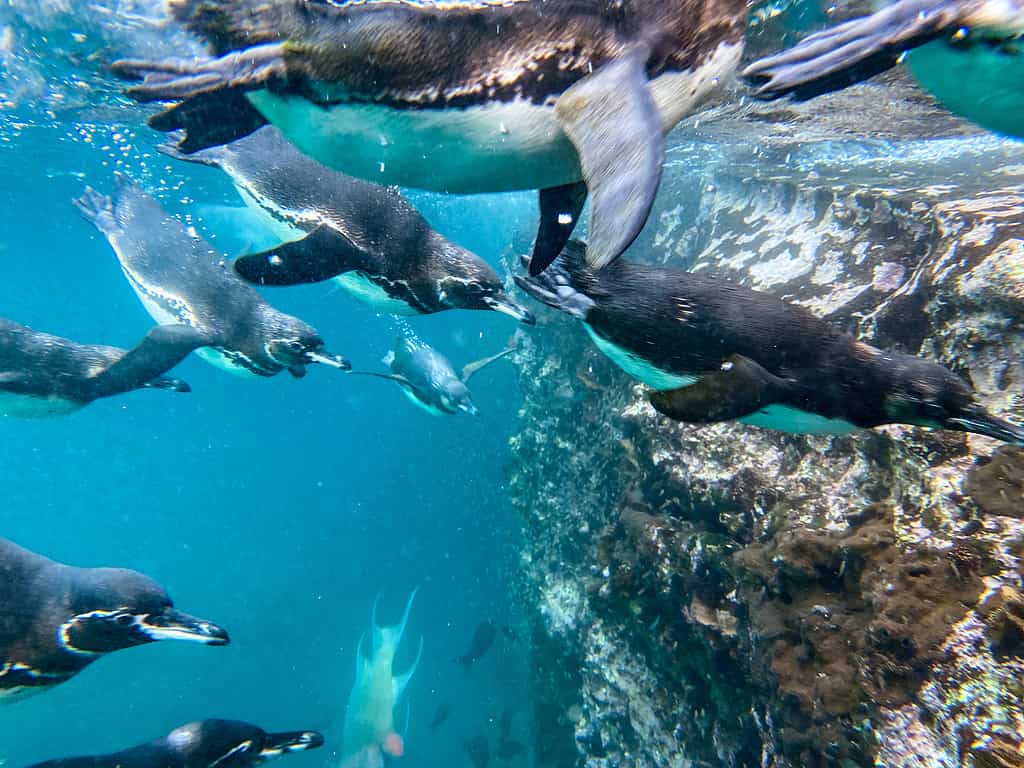
©Joanne Wastchak/ via Getty Images
Penguins have feathers just like any other bird. However, their feathers are wooly and fine. The feathers of a penguin are meant to help keep warm air trapped near their bodies as a form of insulation. The oil over their feathers also helps with swimming, not flying. Other birds, like the Great Potoo Bird or the Red-Billed Quelea Bird, can spread their lightweight feathers apart and move their wings in multiple directions. Whereas the penguin has dense wings, that are more like flippers than wings, that stay mostly to their sides. A penguin’s wings are designed perfectly however for gliding through water. They are often referred to as flippers because of their shape.
Solid Bone Structure
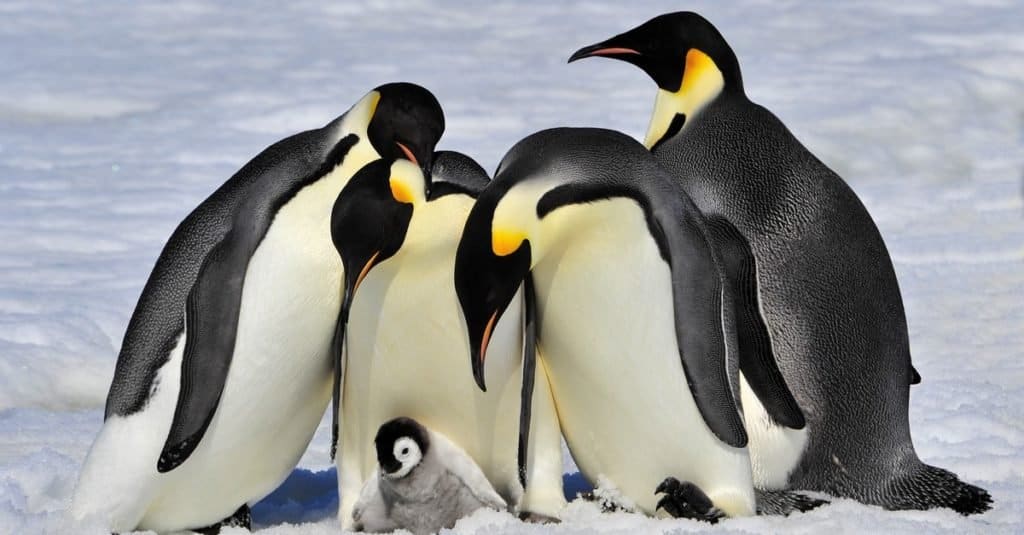
©vladsilver/Shutterstock.com
The bones and bone structure of a penguin are much different than any other bird. Birds that can fly have bones that are hollow and very lightweight. A penguin’s bones are much harder and thicker. This strong structure helps them submerge quickly in water and allows them to swim more efficiently. The bones in their wings are shorter and flatter than other birds as well. The heavy density of a penguin’s bones makes them perfect swimmers and helps them in their ability to hunt and survive. However, this makes them unable to fly.
Heavy Weight
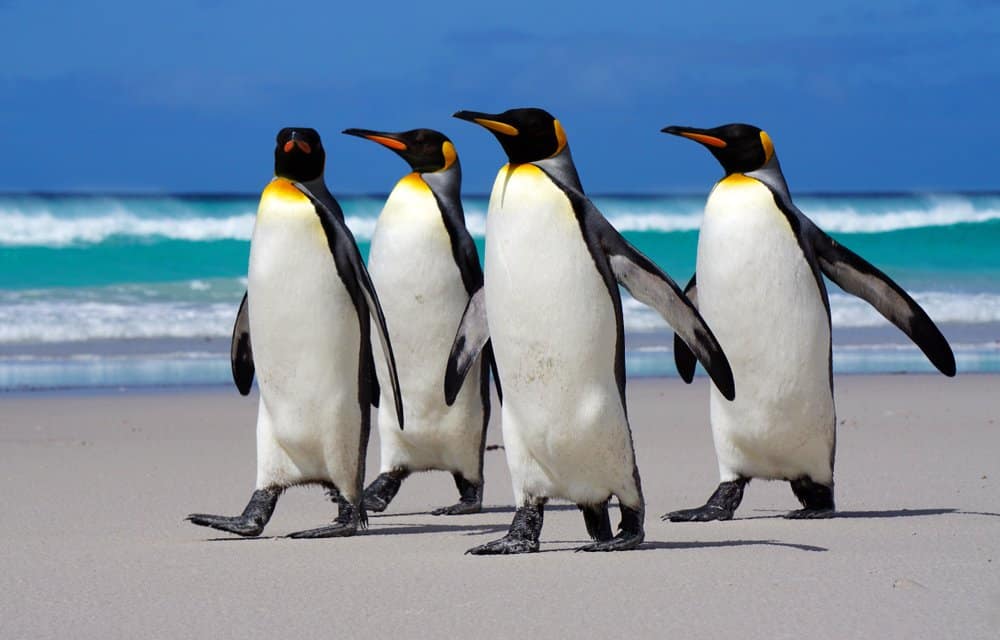
©Phil West/Shutterstock.com
Some species of penguins, for their size, are some of the heaviest birds in existence. This alone makes flying impossible. Penguins have a layer of blubber (fat) under their skin that helps them stay warm in their harsh living environment and surroundings. Pairing that with their dense feathers and solid bones makes them heavy enough that flying is just not a possibility for them.
Food and Diet

©MyImages – Micha/Shutterstock.com
Penguins have a piscivorous diet, meaning their diet mainly consists of fish. They will also eat krill, squid, cuttlefish, and other aquatic creatures. Some of the larger penguins, like the King Penguin or the Emperor Penguin, can eat up to 10 pounds of fish a day. The Adelie Penguin, on the other hand, lives mostly off of krill. The ability to fly would do them no good in their hunt for food. This is why a penguin’s structure and anatomy are much better suited for them to swim. With as much as a colony of penguins eat, they routinely have to search for new feeding grounds and swimming is the quickest and most efficient way to locate these new areas.
Lung Capacity
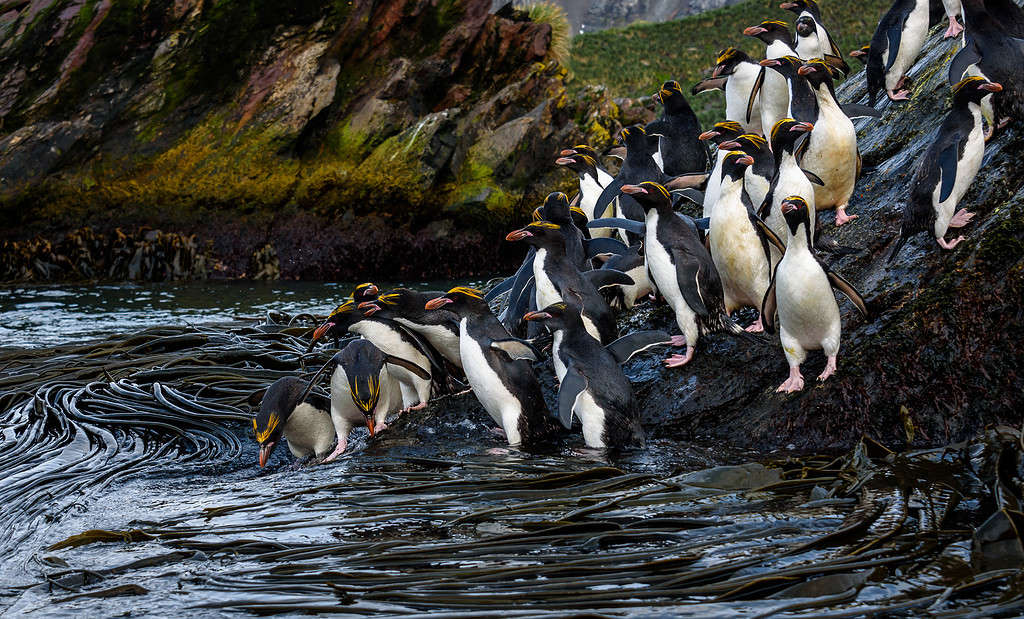
©N8tureGrl/ via Getty Images
Birds that can fly have a highly developed cardiovascular system that helps them in flying. They have a unique respiratory system that allows them to get oxygen from the air more efficiently than other animals. Birds also have nine air sacs that help in their ability to fly. Penguins, on the other hand, do not. They can store air in their lungs which makes it possible for them to spend longer amounts of time in the ocean hunting for food or swimming away from predators. A penguin’s lung capacity is one more reason why this animal is unable to fly.
Body Type
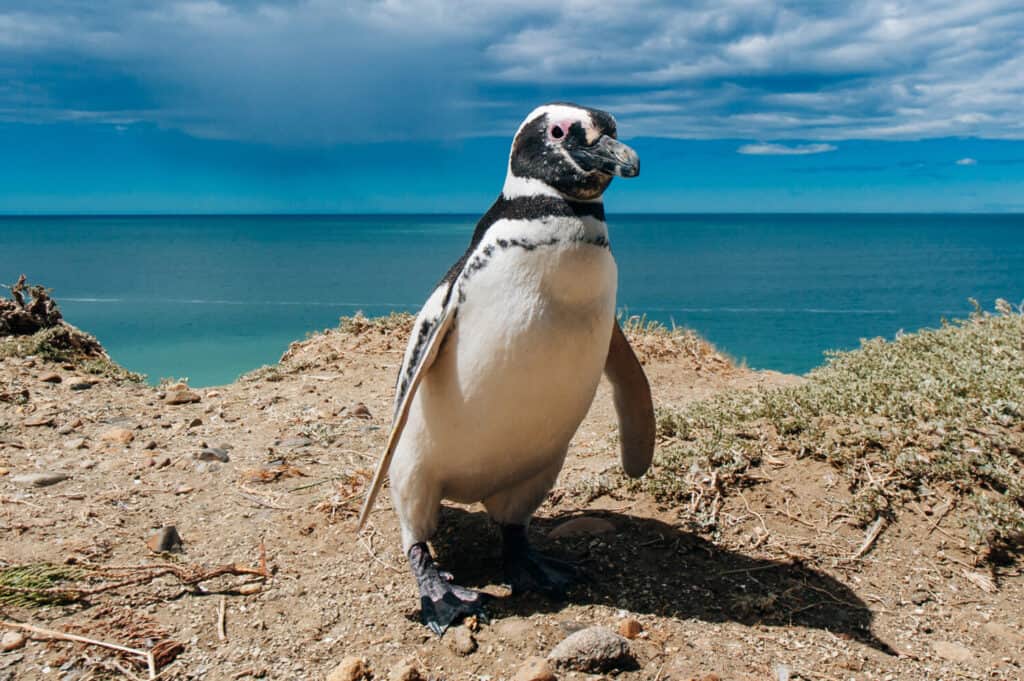
©Brester Irina/Shutterstock.com
A penguin’s body is perfectly constructed for life in the ocean and not in the skies. They have long, streamlined bodies that help them navigate through the water. Penguins will spend around 75-80% of their life in the ocean. However, they will mate, lay eggs, and rest on land. Regardless of the type of penguin, they all have too much of a stocky build, making that another reason why penguins are unable to fly.









